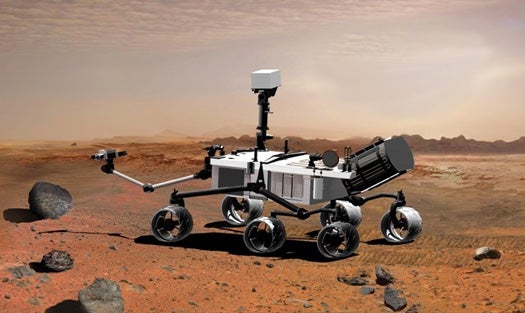An ‘Ion Funnel’ Could Help Future Mars Missions Identify Signs of Alien Life
Tapping a bit of frat-boy ingenuity, researchers at NASA’s Jet Propulsion Lab (JPL) have devised a new way for an...

Tapping a bit of frat-boy ingenuity, researchers at NASA’s Jet Propulsion Lab (JPL) have devised a new way for an old space exploration instrument to suck down large volumes of vaporized particles and analyze rocks for their compositions using an ion funnel, a process that could speed analysis, lighten instrument loads, and improve the odds of finding signs of life.
Mass spectrometry is an old space standby–the Mars Science Laboratory, launching in November, will host spectrometry instruments as part of its science suite–used largely to identify the composition of soil and rock on the Martian surface. Usually it is gathered by a scoop or a robot arm, deposited into a special chamber where it is prepared and vaporized, and then ionized so the stuff of atoms can be separated and identified.
But all this handling of soil and rock samples can taint samples and lead to experimental failures. So JPL scientists went looking for a more hands-off approach to spectrometry. They found it in an “ion funnel” developed at the DOE’s Pacific Northwest National Laboratory.
The new system can analyze samples without lifting them from the surface. A laser first blasts the sample wherever it sits, creating a plume of ions and molecules. The ion funnel then uses a series of progressively smaller conductive rings to guide the ions into the funnel, basically sucking them into the spectrometer for analysis.
In other words, the rover/instrument never has to get it’s hands dirty, and the sample never has to be moved or touched, creating a much cleaner, more pure sample for analysis. Such an ion funnel scheme not only simplifies the science, but it would cut down on the weight and power of future science instrument arrays, making it easier and–perhaps more importantly–cheaper to launch them into space.